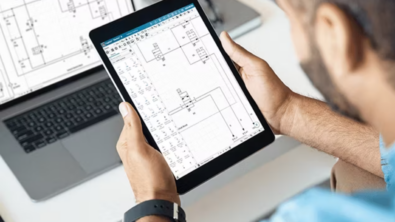Electrification in aerospace and automotive

There are many commonalities and unique aspects of electrification in the automotive and aerospace industries. In no engineering discipline is the impact of digitalization more apparent than in electrical. Modern automotive and aerospace systems and platforms increasingly rely on electrical systems to implement the capabilities required for program success.
Benefits of electrification in aerospace and automotive
Platform developers in aerospace and automotive are interested in capturing benefits of electrification at every iteration. When a capability is implemented electrically, these benefits typically include:
- Gains in reliability
- Reductions in weight
- Overall reduction in cost on the platform
Keys to success in aerospace and automotive electrification
In the big picture, keys to success in aerospace and automotive electrification include technology advancements, cost optimization of batteries, scale–mass–produced electrified vehicles, legislation and incentives on both the business and consumer side as well as industry consolidation and collaboration.
In practice, if you want to succeed in aerospace and automotive electrification, you need:
- A model-based electrical and electronics systems development environment,
- A solid digital twin of your electrical system and
- A development lifecycle that’s connected with a working digital thread.
In the following webinar, explore this trend and learn how Siemens’ contributions to making model-based electrical and electronic (E/E) systems development a reality are enabling program effectiveness on the ground and in the air.→ Electrification in aerospace and automotive


